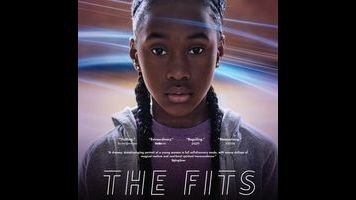Preadolescent anxiety bleeds into eco-horror in the dreamy The Fits

The first time the heroine of The Fits appears on screen, she’s working out in a boxing gym, shadowing her older brother. Preteen Toni (played by the magnetic newcomer Royalty Hightower) dresses in sweats and spars with the older boys, taking pride in being muscular and tough. But she also keeps peering through the door to see what’s going on in the other half of her Cincinnati community center, in the practice space where the teenage girls prepare to compete as part of a championship dance troupe known as The Lionesses. What does she see in them? Maybe she’s drawn to their confidence, which is so different from the guys’—derived from cocky preening and assertive sexuality, not physical violence. Or maybe she just senses a place where she could be part of a team of winners and not be the oddball who only gets whatever ring time is leftover at the end of the afternoon.
Part of what’s so terrific about The Fits is that so much of it is open to interpretation, even though the film as a whole isn’t that oblique. First-time feature filmmaker Anna Rose Holmer keeps the dialogue to a minimum but still tells a fairly straightforward story. When Toni joins The Lionesses—or, more accurately, its junior division, The Crabs—she quickly makes friends with a talkative smaller girl named Beezy and a tall adolescent girl named Maya. But just when she’s starting to settle into life among the rec center’s distaff side, a curious ailment begins to fell the ladies one by one: They suddenly drop into a kind of trance and collapse to the floor, quivering. The phenomenon is mysterious and terrifying at first, but soon it’s become a weird kind of bond for the girls… all except Toni, who hasn’t had “the fits” yet and is once again an outsider.
“The fits” can be read as a specific metaphor for menstruation, though really it works as a general symbol of feminine maturity. The women get it; the men don’t. And while they’re in the throes, the girls jerk about unselfconsciously and at times beautifully, their expressive movements not unlike the ones they’re trying to emulate with their dance routines. For Toni, who practices and practices—fruitlessly—to move as gracefully and throw shade as fiercely as her peers, this new level of badass womanhood represents something else she may never be able to attain. The best she can do is to keep honing her own private, personal hybrid of fighting and stepping, while waiting for some inexplicable external force to define who she’s going to be.
It’s hard to say exactly what The Fits is. The film has echoes of eco-horror, which Holmer accentuates via a bleating, atonal soundtrack and by making the “fits” sequences look surreal and disturbing. There’s also a tinge of social commentary in the suggestion that these kids may have been poisoned by the water in their not-that-affluent Cincinnati neighborhood. But the movie doesn’t hit either of these elements too hard. It’s tempting to call it “George Washington by way of George Romero,” but honestly the latter comes through more in the way that Holmer shoots Cincinnati (similar to Romero’s Pittsburgh in Martin) than from any creeping terror.
That undefinability has undoubtedly been a major factor in The Fits’ success at festivals like Venice and Sundance. In an American independent film market where pictures are so easily typed—“family dramedy,” “quirky road picture,” “quiet art piece,” and whatnot—a change of pace like The Fits can be invigorating. But it’s not just strangeness that makes the movie special. Holmer fills every scene with some well-chosen detail that takes the viewer inside Toni’s head. The film contrasts the sweat, blood, and spew of the boxers with the sparkling glitter of the dancers and shows how Toni struggles to make the transition from one world to the other. It’s never easy for her. Her earrings get infected. Her gold nail polish and temporary flower tattoos peel off. She changes clothes in the bathroom stall because her body isn’t as developed as those of the other girls.
Without ever saying exactly what her heroine is thinking, Holmer captures a lot of what she’s feeling. And what Toni’s going through should be familiar to anyone who had an awkward puberty—which is to say, nearly everyone. The Fits speaks to that petrified 11-year-old in all of us, half-dreading and half-craving the jarring lurch into adulthood.